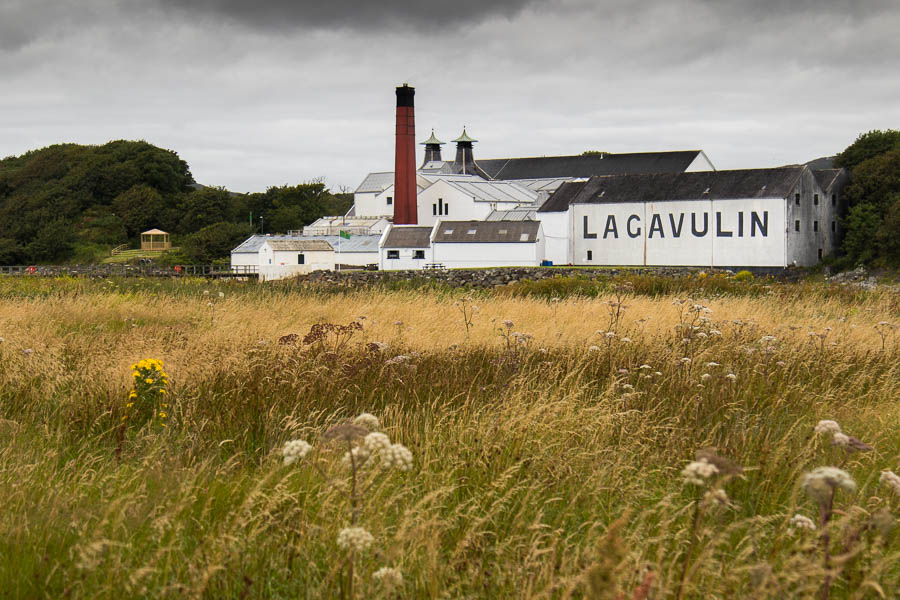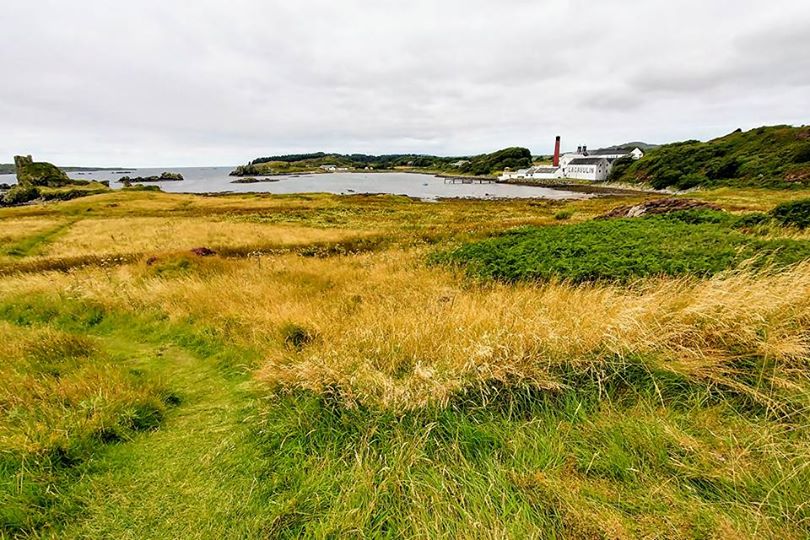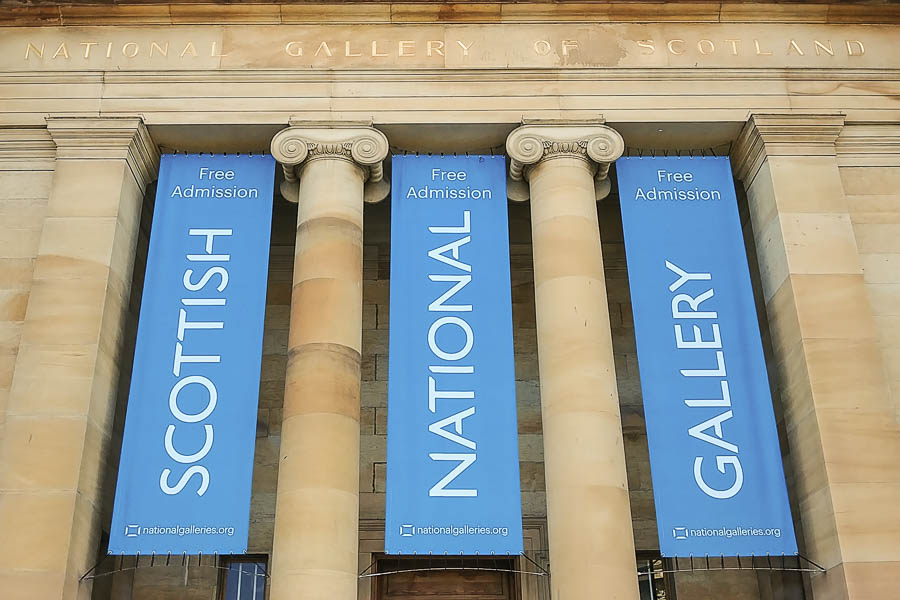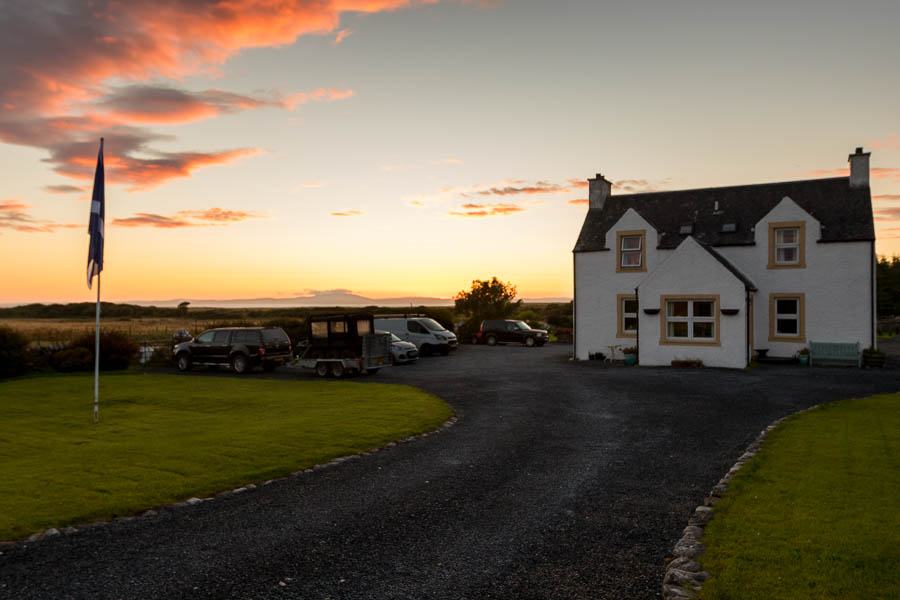More Scotland photos. On the 10th, we visited the Lagavulin Distillery. But we got our first look at it from the ferry two days earlier:

Up close, from the ruins of Dunyvaig Castle, it looks like this:

And for comparison between the LG G6 and the Canon 7D mark II, here's the camera-phone photo I took at about the same time:

At 8:40 CDT on 31 August 2007, I joined Facebook. And then did nothing with it for several days.
I didn't add any Facebook friends until September 4th.
My first post, on September 5th at 7:43 CDT, was "in Evanston," which makes more sense when you remember that Facebook used to preface every post with "Nerdly McSnood is...". (This was before Facebook allowed public posts, and there doesn't seem to be any way to change the post's privacy, so if you're not Facebook friends with me you probably can't see it.)
Anyway, just a bit of trivia. And a little horrifying that 10 years have gone by.
I promised to post photos from Scotland once I had a chance to go through all 800 or so from my 7D, and today, I had a (short) chance.
First: the Scottish National Gallery, Edinburgh, where we had breakfast on August 8th:

Second, Glenmachrie House, where we stayed:

(This is the reverse of the image I posted earlier, about an hour later, and with a real camera and HDR software.)
More tomorrow.
I first visited New York in July 1984, stopping by the Metropolitan Museum of Art on the 25th. I took a photograph of Georges de La Tour's "The Fortune Teller," painted sometime between 1620 and 1639:

Last month I visited again, on the 23rd—just two days shy of 33 years later:

Using Adobe Photoshop Lightroom, I have tried to get the photos to look as similar as possible. But my LG G6 phone and its 13 Megapixel camera just provides so much more data than the 4 Megapixel scan of the Kodachrome 64 slide, which itself has such constrained dynamic range, that the modern photo can't help but be clearer.
In fact, the narrow dynamic range of Kodachrome was one of its selling points. The trade-off was its deep, rich colors and detail—none of which a quick 4 MP scan can read.
If I have the opportunity, I'll re-scan the original slide and try again. For now, I leave the diptych above as a demonstration of how far photography has come since I was a kid.
For comparison, here's the reference image from the Met's website:

It took less than a week for two separate entities to challenge President Trump's pardon of racist thug former Maricopa County, Ariz., sheriff Joe Arpaio. Via Jennifer Rubin, the Federal judge who convicted Arpaio of criminal content has stopped short of vacating the conviction:
Instead she ordered Arpaio and the U.S. Department of Justice, which is prosecuting the case, to file briefs on why she should or shouldn't grant Arpaio's request.
Bolton has scheduled oral arguments on the matter for Oct. 4, the day before Arpaio was supposed to be sentenced.
There is case law that says a pardon implies an admission of guilt, and that will have to be argued in open court.
Rubin adds:
Meanwhile, Protect Democracy, an activist group seeking to thwart Trump’s violations of legal norms, and a group of lawyers have sent a letter to Raymond N. Hulser and John Dixon Keller of the Public Integrity Section, Criminal Division of the Justice Department, arguing that the pardon goes beyond constitutional limits.
Put simply, the argument is that the president cannot obviate the court’s powers to enforce its orders when the constitutional rights of others are at stake.
Lurking in the background is the potential for Trump to pardon associates involved in the probe of possible collusion between the Trump campaign and Russian officials and the possible obstruction of justice that followed. The Arpaio pardon may well have been an attempt to signal to those officials and ex-officials that they can resist inquiries with the assurance that Trump will pardon them. (Recall Trump’s unprecedented remarks that Michael Flynn should hold out for a grant of immunity.) Using the pardon power to obstruct an investigation into his own possible wrongdoing would signal a constitutional crisis.
A crisis that the Republicans in Congress could resolve simply by, I don't know, doing their fucking jobs. But the Party of Lincoln is happy to allow the President to destroy his office for personal gain, as long as they get their tax cuts.
Makes you long for the more-ethical days of Caligula and Nero, doesn't it?
Via WGN-TV, the fourth-largest city in the U.S. has received more rain in the last week than Chicago receives in an average year.
Chicago's average annual precipitation is 910 mm. Since last Friday, Houston has gotten 1,070 mm. The wettest year in Houston history (1900) dumped 1,851 mm on it. So far this year, with 4 months left to go, Houston has gotten 1,798 mm. Of course, the odds are pretty good that the city will get another 53 mm of rain before December 31st.
We have no idea how bad the damage is yet. The entire Houston Chronicle website is about the flood. At least the rain has stopped for now—but officials worry about additional reservoir overflows and levee breaks.
We're just beginning to understand the magnitude of this disaster. And with key Federal posts, including FEMA Director, yet to be filled, President Trump is so out of his depth one can only hope that state and local governments can help.
Hurricane Harvey has dropped so much rain on Houston that two 1930s-era dams have been overwhelmed for the first time in history:
The U.S. Army Corps of Engineers confirmed Tuesday morning that water was spilling from around the dam gates of the Addicks Reservoir, which has been overwhelmed by extreme rainfall from Hurricane Harvey. Officials said they expect the Barker Reservoir, to the south of Addicks, to begin overflowing similarly at some point Tuesday.
A Harris County Flood Control District meteorologist said the overflow from the reservoirs would eventually flow into downtown Houston.
The reservoirs, which flank Interstate 10 on the west side of Houston, flow into the Buffalo Bayou and are surrounded by parks and residential areas. Water levels in the two reservoirs had already reached record levels Monday evening, measuring 32 m at Addicks and 30 m at Barker.
Engineers were unable to measure water levels at the Barker Reservoir on Tuesday because its gauge was flooded overnight, said Jeff Lindner, the Harris County flood control meteorologist.
In response, City Lab asks, why can't the U.S. manage flooding?
For New Orleans, whose below-sea-level position makes it particularly imperiled, the August floods were a reminder of something we should take much more seriously than we have. We ought to apply more aggressively the lessons we claimed to be learning from the Dutch after Katrina. It’s a course of action that would amount to a sea change in how we approach the wet threat that surrounds us on every side.
We need to get as smart and wily about water as Rotterdam. New Orleans’s continued viability as a population center and commercial hub depends on it. We must learn to live with water, to absorb rainfall and storm surge in massive retention facilities, to designate greenspaces that double as parks. We need to stop paving our yardsto make nifty little pads for the family car. We need to build absorbent rooftop gardens on as many buildings as can be put to that purpose.
Speaking of, I'm planning to visit New Orleans this weekend. Harvey is expected to pass northwest of the city tomorrow and land in the Tennessee Valley by Friday afternoon. I'm still bringing water shoes and an umbrella.
Walking to work is an easy way to hit my step goal before lunch. It's 6.75 km and 8,500 steps. At just over an hour, it takes only about 20 minutes longer than the bus or 30 minutes longer than the train.
The problem is the dewpoint. When I left my house, the temperature was a delightful 19°C...and the dewpoint was a sticky 17°C. By the time I'd gone ten blocks I was already uncomfortable.
Note to self: bring a fresh shirt when you walk to work, no matter what the weather looks like.
Articles I haven't got time to read until later:
That's all for now. Busy weekend behind me, another one ahead.